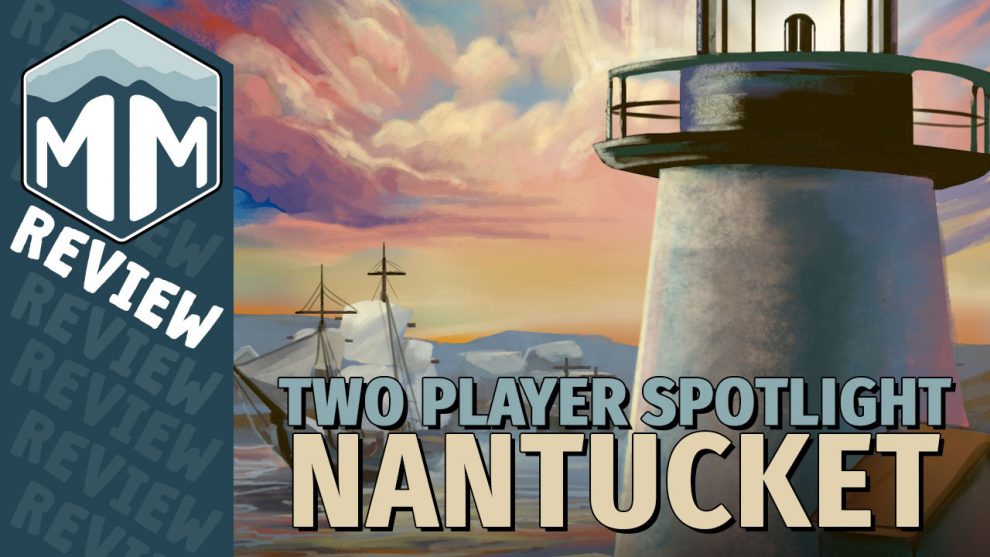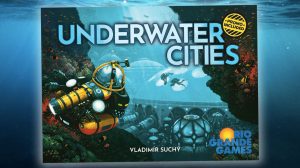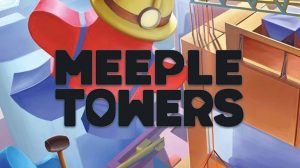Welcome! Many gamers don’t have a large group of people to play with on a regular basis. Our main gaming partners are our significant others, or our children, or roommates, or a co-worker or… well, you get the drift. Whatever the case may be, often times we find ourselves sitting across the table from another person with nothing to do. In this series of articles, we will be turning our focus on some great 2-player only games that can fill that void!
Today we’ll be talking about Nantucket; a game about town building and whaling pitting two players against one another in an effort to become the wealthiest captain. The game was released in 2016 alongside its sister game, New Bedford (which is a great game in and of itself!) and attempted to create the same feel as its sibling in a much more condensed micro-game format. Has Nathaniel Levan managed to pull it off? Read on to find out.

Overview
In the game of Nantucket, each player takes on the role of the captain of a whaling vessel. At the start of the game, there are only three buildings available that players can use to take actions, but as the players begin earning money and purchasing additional buildings, the overall pool of available actions will begin to expand. Money in the game is primarily generated by whaling, which is like gambling in a way. In order to go whaling, the players will have to give up access to their capital (money) for a number of rounds in the hopes of generating new capital. This whaling and town building goes on until the bank runs out of money or all of the town’s buildings are constructed. Then the victory points are tallied and the player with the most points is declared the victor.
Components
Nantucket is a very small game, so there aren’t many components. Firstly, there’s a gorgeous pocket sized box. Nolan Nasser’s at it again with his amazing artwork that really helps draw the player into the game’s idyllic setting. Opening the box you’ll find a double-sided rules sheet, 4 double-sided town cards, a bag of silver coins worth $1 each, a bag of copper coins worth $2 each, a starting player marker, and two tiny captain chits that the players will use to select their actions on their turns. Everything aside from the town cards is made of thick, durable cardboard.
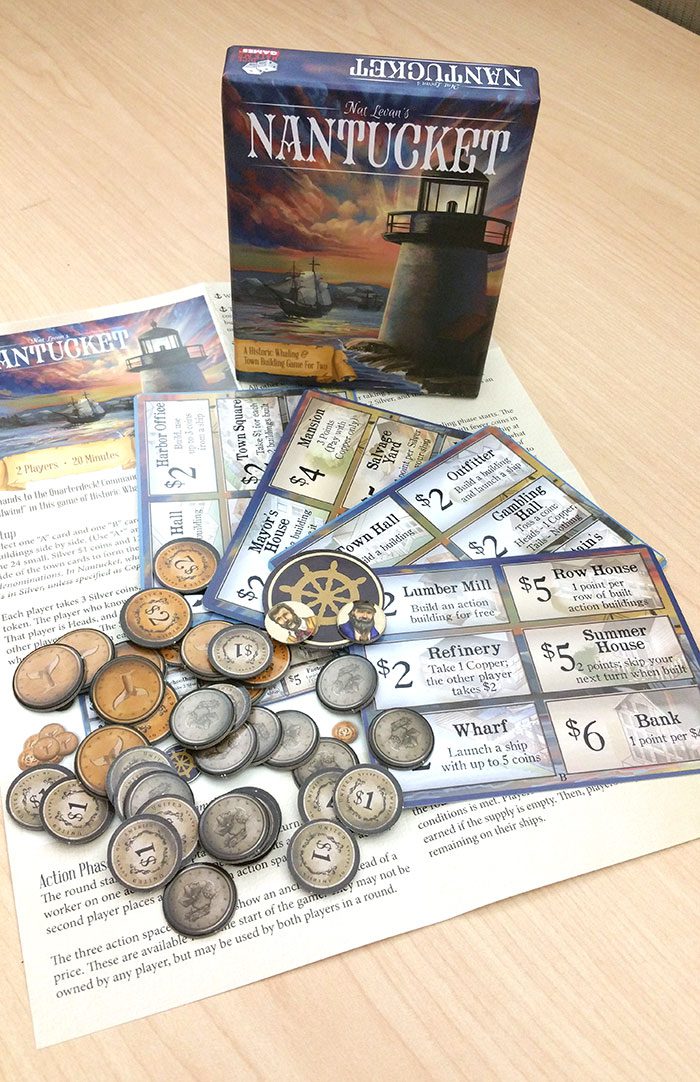
When asked about the interesting decision to make copper coins worth $2 and silver worth $1, Nat Levan had this to say:
It’s a sort of weird consequence of the design being developed around components. The first idea was to make it just a promo pack for the Kickstarter. Sort of “thanks for backing, have a whole other game”. It would be just 4 cards, and you could play with the silver and gold coins from New Bedford, but with a value of $2 instead of $5 for gold. Then I did a lot of playing using actual coins (dimes and pennies), keeping the silver/gold terminology on the cards, and using the larger penny in place of the larger $5 coin. When it became a standalone game, we already had $1 and $5 art, and to keep it distinct, the $2 became copper. That also makes it convenient to play with dimes and pennies, in case you want to keep it in your pocket!”
I have two gripes about the components. The first is that the town cards are pretty flimsy. I wish they were a bit thicker or had a nice linen finish on them. My second gripe is that there really should be a separate whaling chart included with the game. Having to constantly refer to the tiny chart printed on the rules sheet while in the middle of playing the game is regrettable. However, these two things do not impact the gameplay in any real significant way.
Setup
The set up for Nantucket is pretty straightforward. First, two town cards are selected at random such that only one of them contains the Town Hall, Warehouse, and Dockyard. These cards are placed side by side. Next, the coins are separated by value and placed closeby to form the supply. From this supply each player will take 1 copper coin and 3 silver coins. A starting player is chosen and they will take one of the captain chits as well as the ship’s wheel (starting player) token. This person will be “heads” for the rest of the game. The second player takes the other captain chit and will be “tails” for the remainder of the game.
You’re now ready to begin.

Action Phase
Beginning with the player holding the ship’s wheel token, each player takes turns using their captain chit to select, and perform, an action chosen from the town cards. At the beginning of the game, there are only three actions to choose from and these are the only actions that the two players can simultaneously occupy. Every other action becomes unavailable to the other player once it has been selected. These town card actions are used to allow players to build things, launch ships, earn money, or to earn end game victory points. If a player builds a building on their turn, they will mark their ownership of the building by placing one of the coins used to purchase the building onto the building space with either the heads side or the tails side face up, depending upon which side they are.

If a player launches a ship, then they will choose up to 4 coins from their personal supply and place them into a stack. This coin stack is that player’s ship. To eliminate confusion, it’s usually best for the “heads” player to place all of their coins into their stack with the heads side up. The other player would, of course, place theirs tails side up. No two ships can ever be the same size. If the first player launches a ship with 4 coins, then the second player could only launch a ship with a maximum of three coins. Also, at any point during the game, any of the players can exchange 1 copper coin for 2 silver coins from the bank.
Whaling Phase
Once the players have selected their actions, the whaling phase begins. The ship with the most coins goes first. The owner of that ship will pick up their coin stack, shake it up in their hand, and then cast the coins onto the table. Then that player will consult the whaling chart to determine how much money they earned (if any). To better explain this, let’s take a look at the whaling chart and then consider an example.
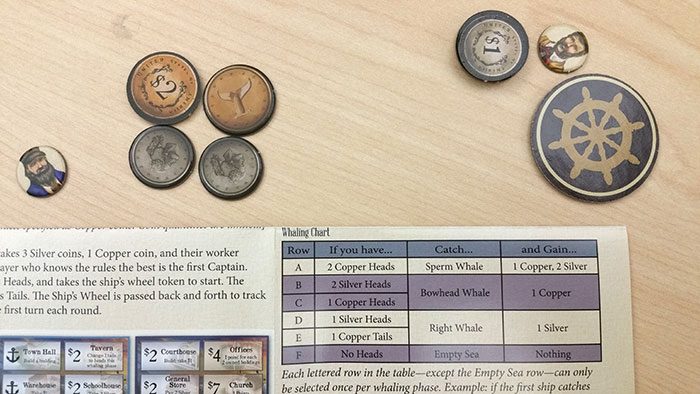
In this example, the player has cast 2 silvers and 2 coppers. 1 copper has come up tails and the other has come up heads. Both silvers have also come up heads. Consulting the chart, the player has several options to choose from. The player could select to receive the reward for 1 copper head OR two silver heads – the Bowhead whale – which will earn them an extra 1 copper. Alternatively, they could choose to take the reward for 1 copper tail OR 1 silver head – the Right Whale – which will earn them 1 silver. Once the player selects their reward, they will return one of the coins used to earn the reward to their supply along with the coin(s) that they earned as the actual reward. For instance, if the player in the example above had chosen to use their 2 silvers to claim the Bowhead whale reward, then they would take a silver from their ship and return it to their personal supply. Then they would also receive their reward of 1 copper from the bank.
You will notice that most of the rewards have different methods of achieving them. This is represented on the whaling chart by the different colored stripes. Once the first player has taken their whaling action, the second player will have an opportunity to do so as well. However, the second player may not select the same reward for the same coin combination as the first player did. For example, considering the examples from above, the second player could NOT choose to use 2 silver heads to collect a Bowhead whale. If they wanted to collect a Bowhead whale, their only option would be to use 1 copper head to do so. Finally, if there’s nothing at all that the player can collect as a reward, they receive no reward but must still return a coin from their ship to their personal supply. Thematically, this shrinking of the coin stacks represents the ships returning to port.
End Games & Scoring
As I mentioned previously, this series of Action and Whaling phases will continue to occur until one of two end conditions is met:
- The bank runs out of copper coins
- All of the available buildings have been purchased
At that point, the players will complete the current round. If the players earn more copper during this time, some agreeable substitute should be used to keep track of these earned coins some other way (writing it down, for example). Then the players will collect all of their coins from their ships and begin tallying their victory points. Each player scores a point for every copper coin they have, each building they own, and then some extra points from some of the buildings. The player with the most victory points is the winner.
Thoughts
When I first sat down to play Nantucket, I really didn’t expect very much from it. Unlike a lot of other small box games (I am looking at you Tiny Epic series!), this game really doesn’t have a lot of moving parts. The game was originally released on Kickstarter as an add-on to the New Bedford campaign. Even though I paid for it at the time, I was nervous that it wasn’t going to be able to stand on its own as a separate entity. New Bedford has some heft to it and there’s a lot going on in that game. Nantucket, it seemed, was meant to give you that New Bedford feel in a much smaller box and I just didn’t see how that was even possible.
But, they pulled it off.
Playing Nantucket feels almost exactly like playing New Bedford and the game is full of possibilities which present the player with significant decisions to make. Right off the bat, the game provides the players with enough capital to send out whaling vessels of maximum to nearly maximum coin stack sizes. This immediately puts the players into the position of having to decide on whether or not to spend their money whaling with potentially no returns on their investment or town building. Town building is a safe option, but not nearly as profitable as whaling has the potential to be.
And there are other considerations all throughout the game. When whaling, for instance, the longer you can keep your boat out on the water, the more opportunities you will have to earn rewards. However, this often means having to repeatedly collect smaller rewards than you potentially could have. For instance, if you’ve got a boat out there made up of 2 silver coins and 2 copper coins, you’re probably better off using silver to cover the rewards as opposed to copper since copper has a better payout overall. However, if you use your copper to claim the rewards, you’ll be receiving a much higher, immediate payout and that might also be desirable for you to do.
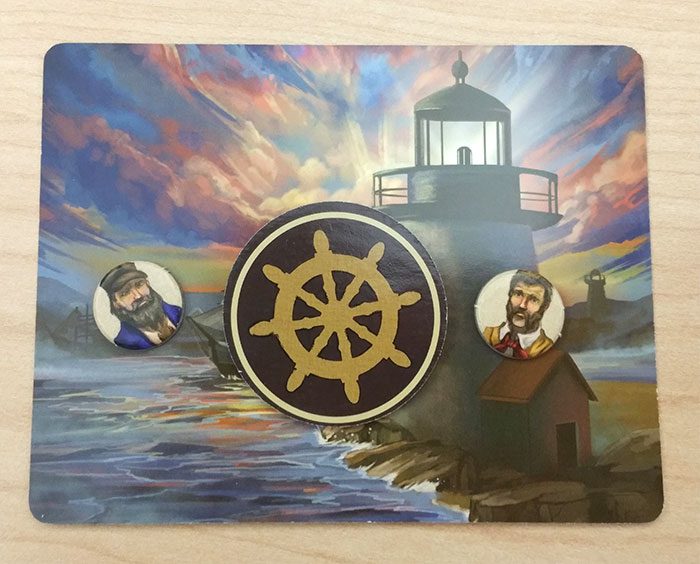
Another consideration is the game end condition of running out of copper. Purchasing buildings requires you to leave some money behind on the town board. Do you use silver in an effort to keep the game going or do you use copper in an effort to dry up the bank more quickly? Should you cash in your copper at the end of the game for silver so that you can score a few more points with your boat? As I said, the game is filled with these types of decisions and that really surprised me.
I went into Nantucket not expecting very much, but I was immediately won over by the rich game play, the game’s ease of portability, the artwork, and the game’s aesthetic overall. Nantucket is a solid little game and it’s one that I carry around in my backpack at all times. It’s super easy to teach and since it’s small and quick, it’s a perfect game for playing just about anywhere. So, if you’re looking for a small pocket sized game with plenty of replay value that won’t break the bank, then Nantucket just might be a perfect fit for you!
What do you think about Nantucket? Give us your opinions about what you like and/or dislike about the game in the comments below!


